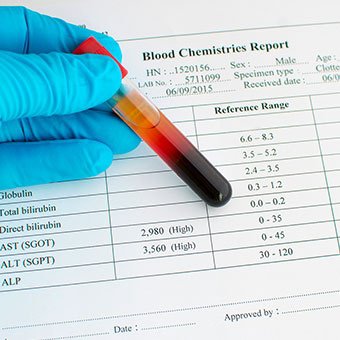Physical Address
304 North Cardinal St.
Dorchester Center, MA 02124
Physical Address
304 North Cardinal St.
Dorchester Center, MA 02124

Contents
When it comes to assessing health through blood tests, bilirubin levels play a crucial role. Bilirubin is a yellowish pigment produced during the normal breakdown of red blood cells. It travels through the bloodstream to the liver, where it undergoes processing before being excreted from the body. Understanding the different types of bilirubin and their levels can provide valuable insights into a person’s health status.
There are two main types of bilirubin in the bloodstream: direct (conjugated) and indirect (unconjugated). Direct bilirubin is the form that has been processed by the liver and is water-soluble. On the other hand, indirect bilirubin is bound to a protein called albumin and is not water-soluble. Measuring these two types separately can help in diagnosing specific liver conditions.
High levels of indirect bilirubin may indicate conditions such as hemolytic disease, sickle cell disease, or adverse reactions to medications or substances. On the other hand, elevated levels of direct bilirubin could point towards liver or gallbladder issues, such as biliary or gallstone diseases.
For adults, the average total bilirubin levels typically range between 0.2 and 1.3 mg/dL. Levels outside this range may prompt further investigation to determine the underlying cause. In newborns, the acceptable range is wider, between 1.0 and 12.0 mg/dL, due to differences in liver function compared to adults.
Healthcare providers start to consider treatment options when bilirubin levels in newborns exceed 15 mg/dL within the first 48 hours or 20 mg/dL after 72 hours. At these levels, there is a risk of unconjugated bilirubin crossing the blood-brain barrier and causing potential harm to the developing brain, a condition known as kernicterus.
While high bilirubin levels can be concerning, the threshold for danger varies between newborns and adults. In adults, extremely high levels of unconjugated bilirubin are rare and are usually a sign of underlying health issues affecting the liver. However, in newborns, levels above 15 mg/dL in the first 48 hours or 20 mg/dL after 72 hours can pose a significant risk.
Excess unconjugated bilirubin in newborns can lead to kernicterus, a condition that can cause brain damage and other serious complications. Monitoring bilirubin levels in newborns is crucial to prevent any adverse effects on their health.
When bilirubin levels are elevated, it indicates that there may be an imbalance in the production or processing of this pigment in the body. High levels of unconjugated bilirubin could be due to conditions like hemolytic disease or sickle cell disease, where red blood cells are broken down at a faster rate.
On the other hand, increased levels of conjugated bilirubin may suggest liver or gallbladder issues that hinder the proper excretion of bilirubin from the body. Understanding the type of bilirubin that is elevated can help healthcare providers pinpoint the underlying cause and recommend appropriate treatment options.
For newborns with high bilirubin levels, phototherapy is a common treatment method to help reduce bilirubin levels and prevent any potential brain damage. This involves exposing the baby’s skin to special lights that aid in breaking down bilirubin for elimination.
For adults, managing high bilirubin levels involves addressing the underlying cause, which could range from liver conditions to medication side effects. Lifestyle changes such as avoiding alcohol, maintaining a healthy diet, and monitoring medications can help in reducing bilirubin levels over time.
Overall, understanding the significance of bilirubin levels in the bloodstream is essential for early detection and management of potential health issues. Regular monitoring and prompt medical intervention can help prevent complications associated with abnormal bilirubin levels.


